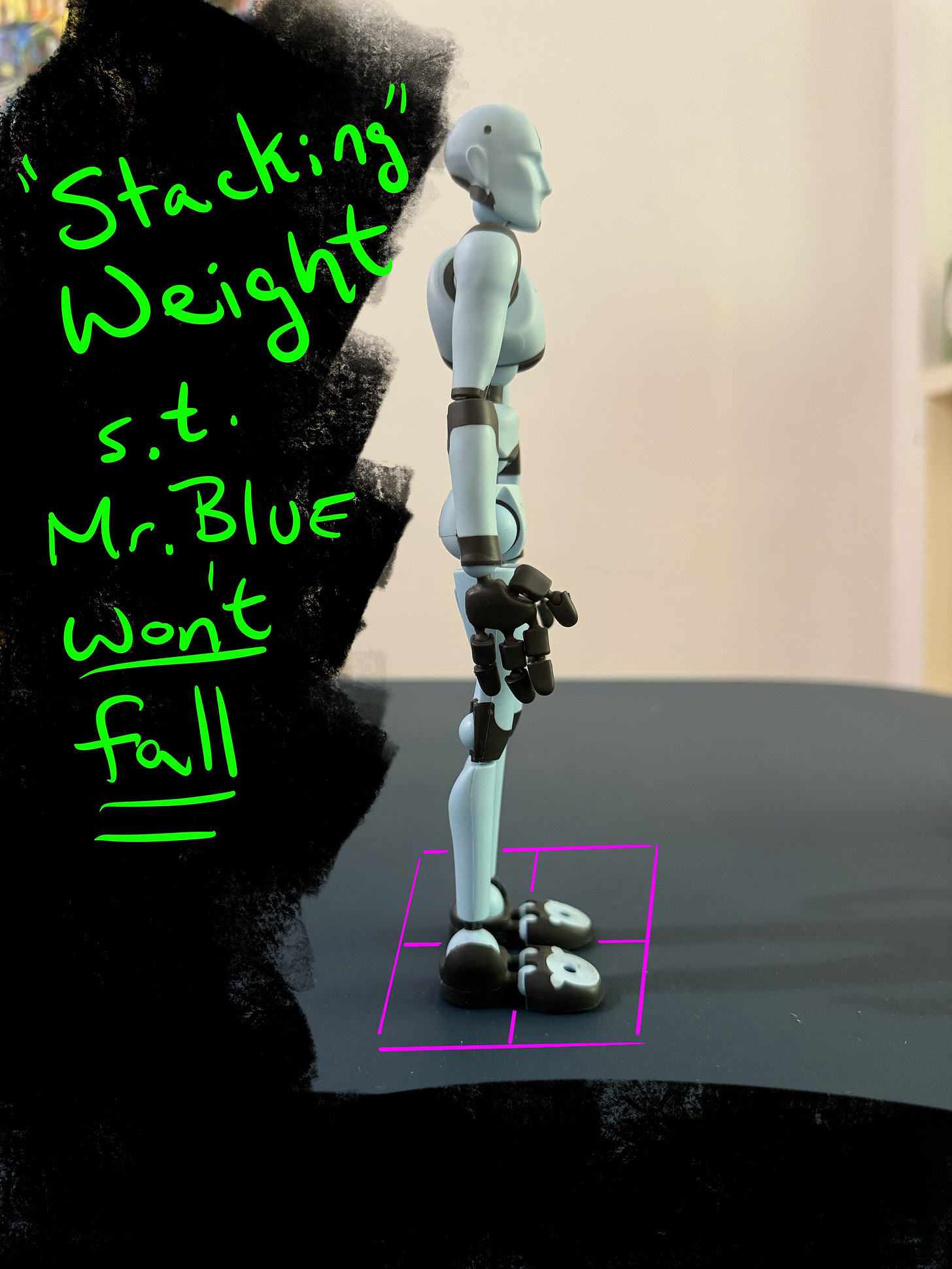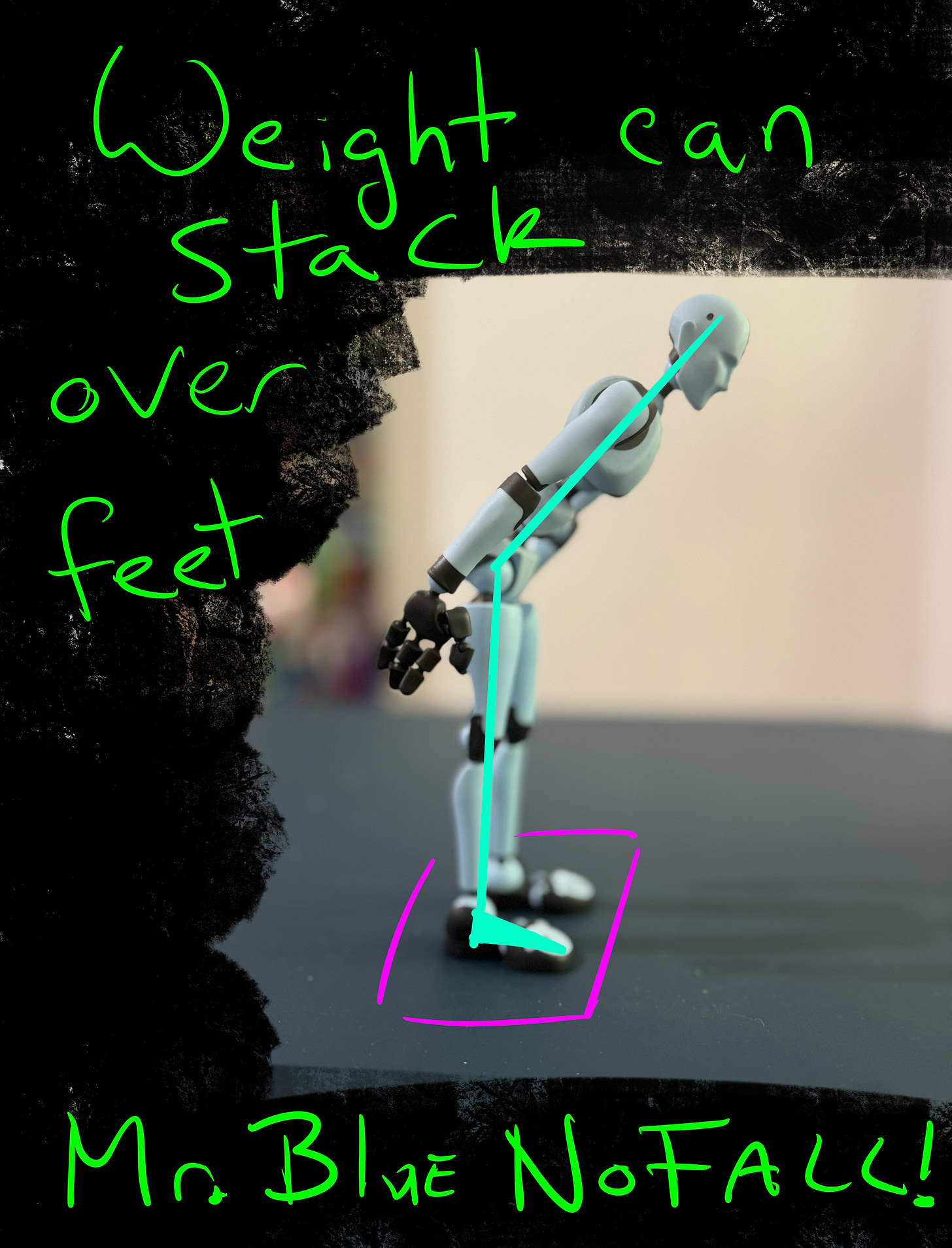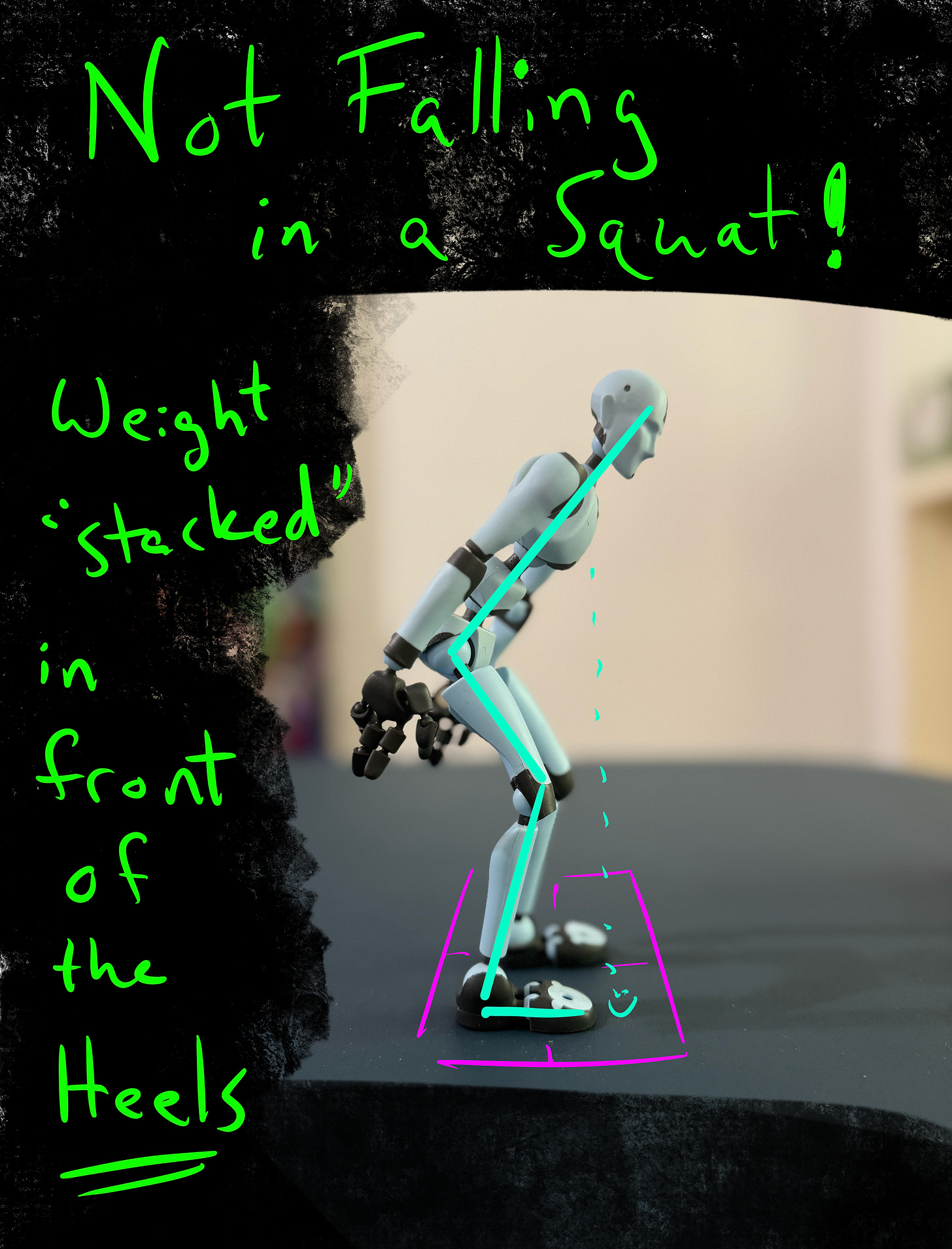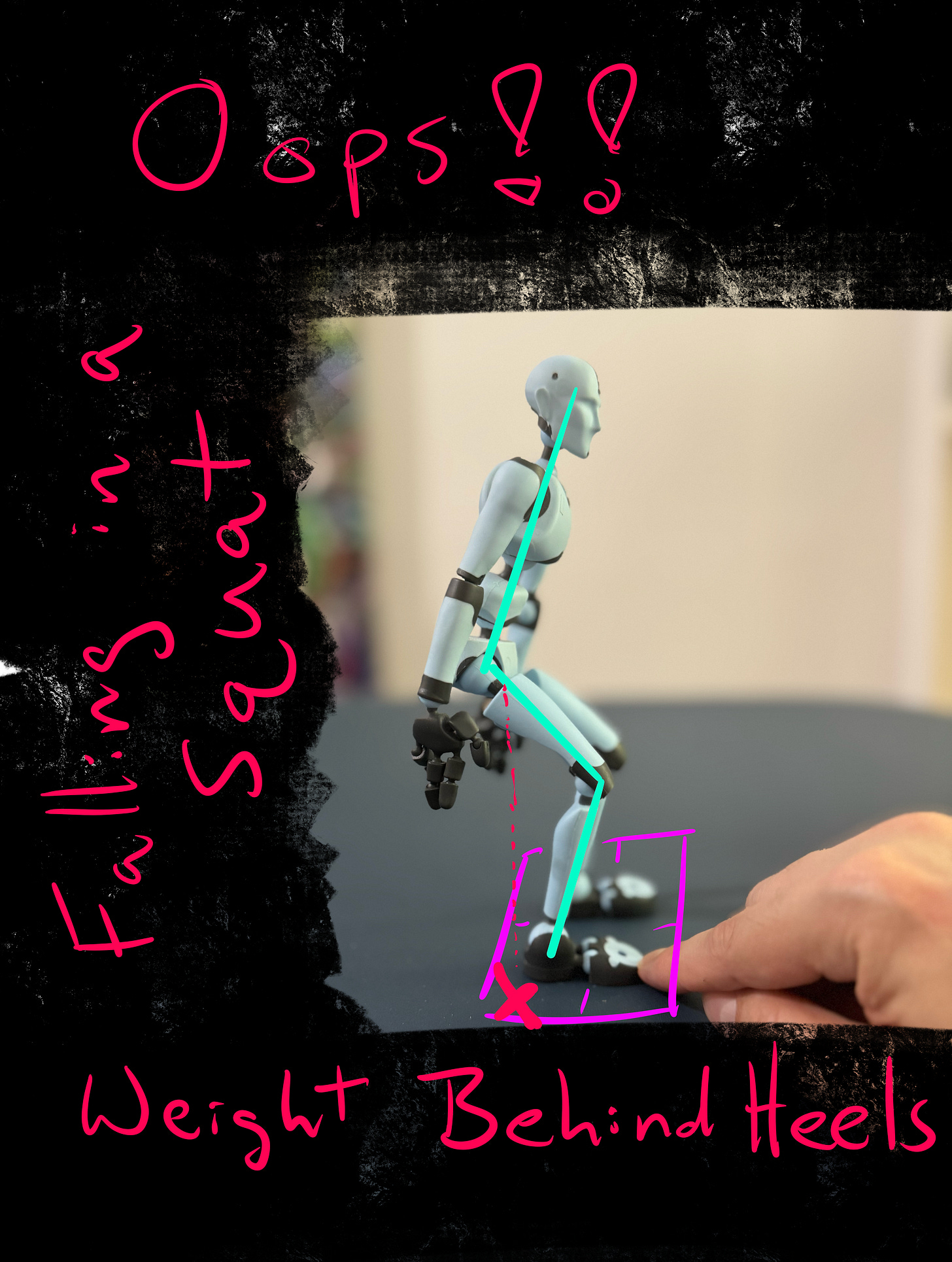Stacking Weight
AKA - Don't Fall!
Happy Friday! I hope you enjoyed drawings from Tuesday’s post. In case you missed them, you can check them out here.
This week I’d like to take a little anatomy detour and talk about something that is related to your ability to balance. When we stand, some of us may “feel heavy” while others of us may “feel unsteady”. In both cases, you could say that the person is standing, so what’s the difference?
It turns out that the answer is a bit more complex than a single little blog post can address. I’ve written before that developing a sense of balance is quite an important part of the Alexander Technique. This sense of balance is intimately tied to our sense of feeling (proprioception), but can we just learn something about stability from looking at the basic structure of an object?
Stacking Weight
In the block-stacking problem, you are given a collection of identical blocks and asked to arrange them such that you maximize the overhang of the top block. In the image above, I’ve attempted to stack 4 yoga blocks in accordance with the optimal solution (I did this by hand feel so it’s not perfect). These weights are stacked one on top of the other and do not fall.
This is a rather delicate balance, but you can see that no glue or tape is needed to hold this structure together.
To show you how this relates to an upright structure like us, I’m going to ask Mr. Blue for some assistance.
He’s Baaack
Much like the stacked yoga blocks, Mr. Blue is made up of various puzzles pieces that can arrange themselves into a variety of shapes. In the image above, Mr. Blue is standing. You will notice that he is not glued to the table and has to “balance” on his feet.
I put balance in quotes because Mr. Blue doesn’t have a sense of balance; he just has structure and either stands or falls.
The purple box in the image above represents a little area of floor that is Mr. Blue’s. I only draw this box to give you a better perspective of how the whole structure stacks on top of the feet.
In the images that follow, I’ve arranged Mr. Blue into a variety of positions with various types of leans and bends. Some of these positions are stable and others are not. In general, we have the ability to either fall to the front, the back, or the side. I am ignoring the side for today and want to highlight that our structure is intrinsically less stable as we go backwards.
That is, if our weight goes backwards over the heel a tiny bit, we will fall if we don’t stiffen up like crazy.
The Ankle Examples
Notice in the two examples above, my finger is present when Mr. Blue leans back. This is the only way I can keep his structure upright.
The Hip Examples
The Ankle, Knees, Hip Examples
These two examples are likely the most important for you to see. When we get in and out of chairs (sit to stand / stand to sit), we can sometimes throw our structure too far backwards over the heels during the journey. The result is a mighty big kerplop into the chair or a mighty big straaaiiin in the back while we push our hands into the arm rest to get out of the chair.
Just to be a bit more complete, I’m including 2 examples that show how the arms can contribute to this stacked balance equation…
Arm Examples
More Thoughts on Stacked Weight
When you look at these images, please note that there are no muscles or bones or blood or guts or thoughts going on here. That said, if you place yourself in the same positions as Mr. Blue, you will feel a lot of unsteadiness in the RED scenarios.
PLEASE DON’T FORCE THESE UPON YOURSELF AND FALL!!!
If you place yourself in any of the properly “stacked” scenarios, you may feel stiff or light and balanced. Both options are possible as our living structures have much more dynamism than Mr. Blue.
Stacking weight does not mean that you arrange yourself into a position and stiffen up in the muscles and joints to become a statue like Mr. Blue. Stacked weight is just a term to refer to a momentary snapshot of how your weight is organized!
The Exercise
The next time you’re standing, ask yourself if you can feel how your weight is stacked. Does your weight feel like it’s going more towards the toes or the heels? Is it somewhere in between?
Can you get a sense of how your head relates to this? If you feel your head leaning forward a tiny bit, do you feel the connection with the ground changing?
This exercise may seem silly to some people, but it’s a great way to begin getting the feeling of our total structure in balance.
Get In Touch
Have a question about this post? Ask in the comments below or hit the like button. You know, all those good social interaction things for the algos!
If you’re in NYC, you may learn more about my private teaching practice at johndalto.com.
If you’d like to book any lesson time with me, you can find my booking link here.











